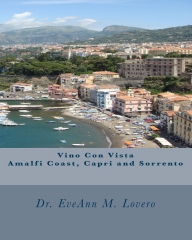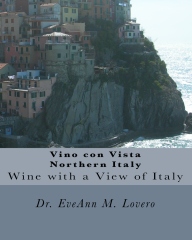
Image via Wikipedia

Church of San Giorgio, Ragusa. Designed in 1738 by Rosario Gagliardi, it is approached by huge staircase of some 250 steps (Photo credit: Wikipedia)

Illustration 3: A Sicilian belfry crowns Rosario Gagliardi’s Church of San Giuseppe in Ragusa Ibla (Photo credit: Wikipedia)
Witness the dramatic landscape, the enchanting wine regions and the historical UNESCO World Heritage Sites in the late Baroque towns of the Val di Noto in Southeastern Sicily. Southeastern Sicily is a “buon appetito” and Vino con Vista paradise. Culinary arts are truly appreciated in this region. They have mastered the art of merging a cultural kaleidoscope into delightful multi-cultural gourmet cuisine.
There are eight towns in southeastern Sicily that were all rebuilt after the earthquake of 1693: Caltagirone, Militello Val di Catania, Catania, Modica, Noto, Palazzolo, Ragusa and Scicli. They are considered the “Pearls of Sicily” and are characterized by buildings with splendid facades and interiors. The devastating earthquake gave the architects a blank slate, so they selected the opulent Baroque style and built the structures using a local white limestone. These UNESCO jewels are filled with gorgeous Baroque architecture. The buildings and churches are covered with ornate limestone that has a soft honey-colored patina from the sun.
1. Noto is the administrative center of the Noto Valley. On the eastern side of Noto the Porta Reale (Royal Gate) was erected in 1838 for King Ferdinand II. It offers a grand entrance to Piazza Municipio and Corso Vittorio Emanuel, Noto’s main streets. Visit the Church and Convent of San Francesco and the Church of San Carlo al Corso. The Church of San Domenico and the Palazzo Villadorta are also worthwhile. Noto Antica was particularly significant during Arab domination. Under Arab rule, Sicily was divided into three districts and Noto was a key player. The Sicilian Baroque Cathedral of San Nicolo is in the Piazza XVI Maggio. The cathedral recently received a new cupola.
2. Ragusa was built on two levels and is divided into two parts: Modern and Ibla. Ragusa Ibla is cloaked with interesting medieval history. In Ibla visit the Palazzo Bertini on Corso Italia 35. It was built by the Floridia family in the 1700s. The building is characterized by three interesting carved masks located in the keystones of the windows that represent three powers. These faces convey an interesting story about Sicily. Visit the Palazzo Donnafugata. The Palazzo houses an art gallery with canvases by Hans Memling, Ribera and Antonello Messina. In Ragusa the elaborate churches include Chiesa Giovanni Batista and the Cheisa de San Domenico with the majolica bell tower. The Cathedral was named after St. John the Baptist and was built on top of the church of Saint Nicholas after the earthquake of 1693.
3. Modica is divided into two areas: Modica Alta (upper Modica) and Modica Bassa (lower Modica). Two noteworthy monuments are Saint George’s Cathedral in Modica Alta and Saint Peter’s Cathedral in Modica Bassa. Saint George’s Cathedral was built around 1350. It was partially destroyed by the earthquake of 1613 and completely demolished by the devastating earthquake of 1693. It was reconstructed at the start of the 18th century by Mario Spada from Ragusa and Rosario Boscarino from Modica in the Late Baroque style. The statues of the Apostles line the entrance to the church on Corso Umberto, the town’s main artery.
To enter Upper Modica (Alta) take Via Garibaldi from Saint Peter’s Church. Walk about 250 steps to the Church of Saint George with a panoramic view of Lower Modica. The rose-colored limestone church has twelve columns and five naves with a central dome and two lateral domes. In the church, admire the inlaid silver holy chest in front of the altar. It was made in Venice in the 14th century and donated to the church by the Chiaramonte earls.
To learn more about Sicily read www.vino-con-vista.com Travel Guides and
Vino Con Vista Travel Guides can be purchased at these sites


























